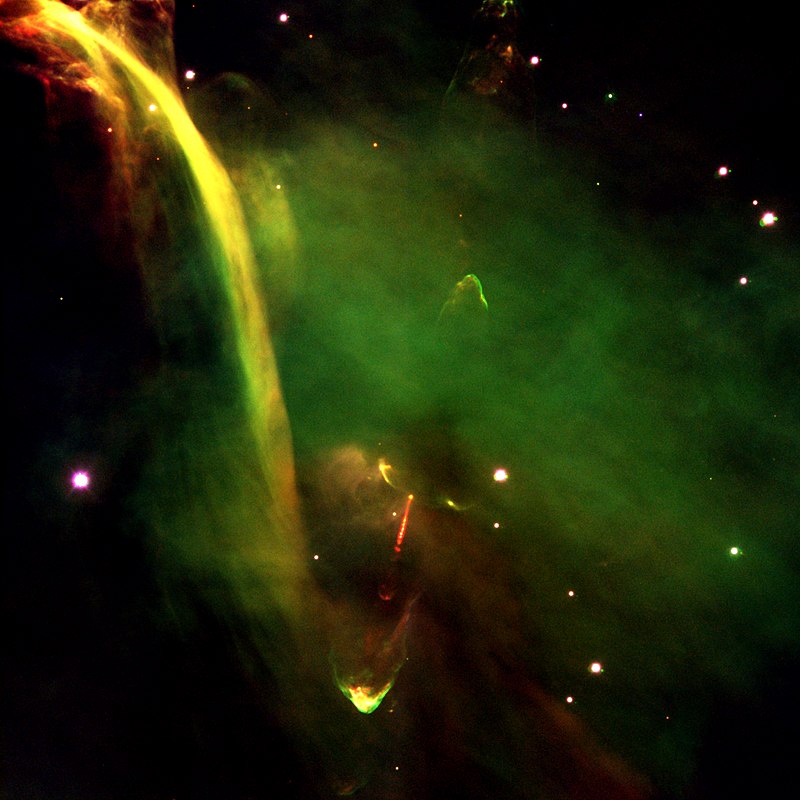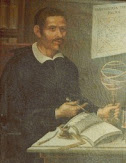 |
| Wide angle view of Trifid and Lagoon Nebulae, Sep 20, 2024. Photo credit: Purnendu Gupta |
The Lagoon nebula is a popular late-summer / early fall target for stargazers in the northern hemisphere. Perched above the tipped "teapot" of Sagittarius it disappears below the horizon quickly in the following months. By that measure, this Friday, September 20th, two days before the official start of fall, was past its prime viewing window. Yet, I chose to give it a shot.
The result was the image above. A two-for-one wide angle view of two nebulae, the Trifid on the left and the Lagoon on the right. Light that is more than four thousand years old, gathered over 52 minutes through a narrowband filter. The image is rich in red Hydrogen-alpha light which is the signature of emission nebulae. To me, the swirling clouds around a brighter core of the Lagoon looks like the whorls in rose petals. The nearby Trifid has menacing dark streaks across its face. Unfettered by such features, the Lagoon might appear to be a calmer place. Yet, nothing could be farther from the truth.
Same But Different
But before I go into an explanation, a few notes on what was different in my equipment approach, this time. If that is not your interest, feel free to jump to the next section, you will miss nothing.
While this would be my first time imaging the Lagoon, I had photographed its immediate neighbor - the Trifid nebula four years ago with more modest equipment. A lot had changed since then. Instead of my stock DSLR, I would be using a dedicated astronomy camera now from the ZWO product line. The cooled color camera has much lower thermal noise and, lacking a built in IR filter like DSLRs, does not cut out the red glow of H-alpha. My old alt-az motorized mount which prohibited exposures longer than 25 seconds due to star trails was now replaced by a portable Sky Watcher AZ-Gti. Originally an alt-az mount, it is now set up in equatorial mode with a wedge. It can comfortably handle long exposures of 2 minutes or more (guided) without causing star trails. Lastly, I had replaced my long focal length 1500 mm Maksutov scope (which can sometimes crop large objects such as nearby nebulae). My new telescope, a 430 mm focal length Apertura 72 ED refractor, acquired before the solar eclipse this year, offered a wider field of view. I could, for the first time, include two separate nebulae in one shot. Finally, this was also the first time I had set up in my front yard (as opposed to my backyard). What that meant, is I could not see the pole star as my house came in the way. And yet, due to the magic of software assisted three-point-alignment, I could align my scope to the north star even while being able to see only southwards.
Storm Near A Teapot
The Lagoon, unlike what its watery name signifies, is no lake placid. It was first discovered around 1654, by an Italian priest-astronomer Giovanni Holdierna, a contemporary of Galileo. He used the newly invented Galilean style telescope of around 20X magnification which offered limited view of the nebula similar to average binoculars of today. In modern times, scientists have peered deep into the heart of the Lagoon with immensely more powerful tools like the Hubble space telescope and revealed some of its secrets. Beyond the shroud of gas and dust which is opaque to visible light, and revealed in infra-red, lies a an open cluster known as NGC 6530. It is a stellar nursery where clouds of hydrogen are collapsing under gravity to form new stars.
 |
| Infrared view into the heart of the Lagoon nebula (right) revealing nascent stars hiddden by gas in the optical view (left). Credit: Nasa, ESA and STSci |
Twisters in Tranquility
 |
| Core of the Lagoon Nebula - Labelled. Source: Hubblesite - 1996 |
Birth Mark
 |
| Schematic View of Herbig Haro (HH) Object. Source: Wikipedia image by Gmaxwell, Georg-Johann, Cherkash. |
 |
| Three-colour composite of the young object Herbig-Haro 34 (HH-34), now in the protostar stage of evolution. By ESO, CC BY 4.0, Source: Wikimedia Commons |
Layers of the Lagoon
 |
| Giovanni Hodierna. Source: SEDS |
- Giant "Twisters" and Star Wisps in the Lagoon Nebula from Hubblesite
- Messier 8 from Nasa
- Stormy seas in Sagittarius from esahubble.org
- Breaking waves in the stellar Lagoon from esahubble.org
- Giovanni Battista Hodierna from messier.seds.org
- Herbig-Haro Object from Wikipedia
No comments:
Post a Comment